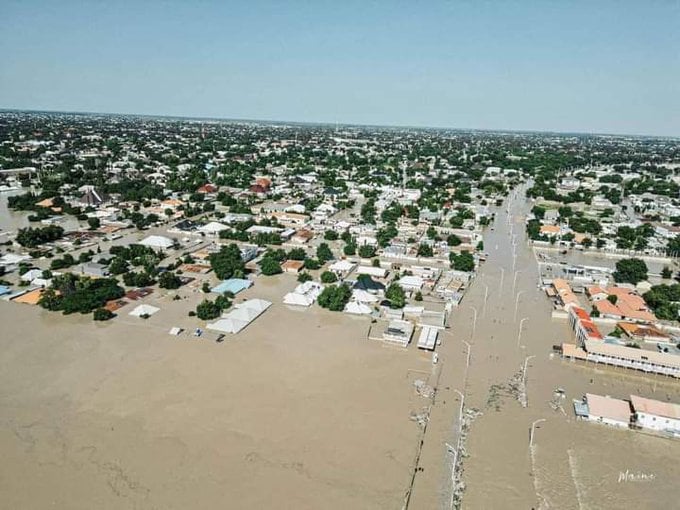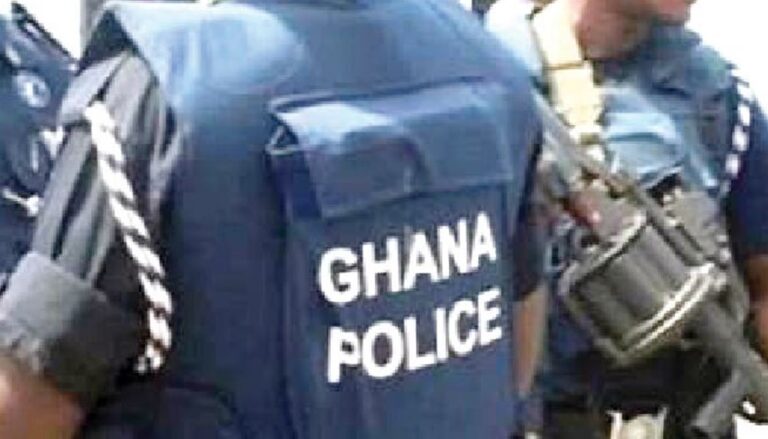
Several states, including Kaduna, Nasarawa, Bauchi and Jigawa, have intensified campaigns to avert flood crisis, The PUNCH reports.
According to figures obtained by The PUNCH from the National Emergency Management Agency on Monday, no fewer than 232 persons have lost their lives, while 121,224 others have been displaced following floods that swept through parts of the country as of September 20, The PUNCH reports.
The 2025 flood dashboard shows that at least 339,658 people also recorded some form of losses, with 681 sustaining various degrees of injuries.
Deaths were recorded in seven states, with Niger State accounting for 163 fatalities, Adamawa 59, Taraba five, Yobe two, Borno, Gombe, and Jigawa one each, bringing the nationwide death toll to 232. The floods also resulted in 115 cases of missing persons across the country.
The disaster also left 42,301 houses damaged and destroyed about 48,447 hectares of cultivated farmlands.
The most impacted states include Lagos, where 57,951 people were affected, 3,680 displaced and 3,244 houses damaged; Adamawa, with 57,890 affected, 23,077 displaced, 438 injured, 59 killed, and more than 9,000 farmlands destroyed; and Akwa-Ibom, where 46,233 persons were affected, 40,140 displaced, with over 17,000 homes and farmlands damaged.
Other states severely hit are Imo, which recorded 29,242 affected, 15,607 displaced, 81 injured, and hundreds of homes and farms destroyed; Taraba, with 26,722 affected, 3,080 displaced, 88 injured, and five killed; Rivers, with 22,345 affected and 9,645 displaced; Delta, with 14,057 affected and 3,325 displaced; Abia, where 11,907 were affected, 4,896 displaced, and 21 injured; and Edo, with 10,608 affected and 2,439 displaced.
Also affected are Borno, which had 8,164 people impacted, 2,436 displaced, three injured, and one death; Kaduna, with 7,334 affected and 662 displaced; Niger, where 6,041 were affected, 1,860 displaced, 11 injured, and 163 deaths; Bayelsa, with 5,868 affected; Cross River, which reported 5,646 affected and 5,518 displaced; Yobe, where 4,256 were affected, 486 displaced, and two killed; Sokoto, with 4,278 affected and 1,287 displaced; Gombe, where 4,098 were affected, 865 displaced, 12 injured, and one death; and Ondo, which reported 3,735 affected and 363 displaced.
The floods further impacted Jigawa, with 3,650 affected, 293 displaced, and one death; Kogi, where 2,825 were affected; Kwara, which recorded 2,663 affected and extensive farmland losses; Anambra, with 925 affected and 816 displaced; Nasarawa, where 749 persons were affected and all displaced; Kano, which recorded 1,446 affected; and the Federal Capital Territory (Abuja), where 1,025 people were affected and 117 houses damaged.
NEMA identified food, shelter, health services, water and sanitation, and livelihood support as the most urgent needs of victims.
In the aftermath of the floods, NEMA identified several obstacles hampering response efforts. Resource shortage was the most pressing challenge, accounting for 68 per cent of reported difficulties.
This was followed by the inaccessibility of flooded communities (17 per cent), which made it difficult for rescue teams and relief materials to reach victims. Security risks (six per cent) in some locations also slowed operations, while community resistance (seven per cent) further complicated humanitarian access and aid delivery.
Gombe households displaced
The Gombe State Emergency Management Agency said the floods had displaced hundreds of households and claimed several lives since the start of the rainy season.
The Executive Secretary of SEMA, Gombe, Haruna Abdullahi, confirmed that no fewer than 986 households have been affected so far, while 15 lives have been lost to flood-related incidents.
“The situation is worrying. From the beginning of this rainy season till date, we have recorded 15 deaths, and close to 1,000 households have been displaced across different communities,” Abdullahi said.
He explained that one of the most recent incidents occurred at Jurara in Kwami Local Government Area, where about 96 people were displaced and currently being hosted by members of the community.
“So, also at Jalingon Kamu in Kaltungo Local Government Area, about 102 persons were dislocated and are now managing with their neighbours,” he added.
Abdullahi added that a tragic canoe accident compounded the situation in Funakaye Local Government Area.
“A canoe capsized in a village near Bage, leading to the death of five people, while only two survived,” he said.
The SEMA boss, however, assured that the agency was working with local authorities and humanitarian partners to provide relief to victims, even as he urged residents in flood-prone areas to take precautionary measures during the peak of the rainy season.
In Sokoto, findings from a joint assessment conducted by SEMA and NEMA showed that the torrential downpours on September 4 and 9 ravaged 61 communities in Rabah Local Government Area, destroying about 2,200 houses and displacing more than 5,300 households.
With flooding already affecting over 5,000 households and killing at least two people in Sokoto alone in the past fortnight, humanitarian groups and community leaders are calling for urgent interventions to protect lives, provide relief to displaced families, and invest in long-term flood and water transport safety measures.
Kano houses, farmlands
Many houses were destroyed during the recent flood disaster, which ravaged a number of local government areas of Kano State within the last two weeks.
The Executive Secretary of the Kano SEMA, Alhaji Isyaku Kubarachi, said, “As you know, the rainy season is coming to an end, but the problem is that whenever it rains, the rain is always accompanied by strong windstorms, thereby causing a lot of havoc to many houses by uprooting the roofing of the affected houses.
“We have several such houses and we even recorded fatalities, but I cannot give you the exact number of persons affected or houses destroyed because we’re still working on it,” he said.
Kunarachi said when they finished compilation of the affected persons and houses, they would forward the comprehensive report to the state government.
In neigbouring Bauchi, an official of the State Emergency Management Agency, Adamu Nayola, noted that the state government had spent about N500m as an intervention fund to help victims rebuild houses affected by floods across the state.
Kaduna flood camp
A two-day torrential rainfall also wreaked havoc across Zaria and parts of Kaduna metropolis, displacing at least 970 residents, including hundreds of children, and destroying no fewer than 270 homes, The PUNCH learnt.
The downpour, which began on September 11, lasted until the early hours of September 12 and left a trail of destruction in multiple communities in Zaria, as well as the densely populated Kigo Road Extension in Kaduna North Local Government Area.
These formed the highest figures for those displaced in Kaduna in the last two weeks.
Meanwhile, the Kaduna State Government has announced the temporary closure of the Bashama flood camp in Tudun Wada, Kaduna South Local Government Area, following what officials described as a significant improvement in the flood situation that displaced dozens of families in recent weeks.
According to the Kaduna State Emergency Management Agency, the camp accommodated 42 households comprising 239 residents, including pregnant women, persons with disabilities, and children, who were forced out of their homes when floodwaters submerged parts of the community.
Speaking during the exercise, KADSEMA secretary, Dr Usman Mazadu, who was represented by the acting Director of Disaster and Relief Management, Mubarak Zakari, said, “The collaboration among all the stakeholders ensured that the entire operation was conducted seamlessly without any secondary incidents,” Zakari said. “From evacuation to shelter management, the coordination was effective, and we were able to meet the immediate needs of the displaced families.”
Governor Uba Sani also reassured residents of his administration’s commitment to disaster preparedness and long-term flood mitigation.
“We will continue working with partners to build a more resilient Kaduna State and ensure our communities are better protected against environmental hazards,” the governor said in a statement.
Some residents who returned home after weeks at the camp expressed appreciation for the support they received.
“We lost our belongings to the flood, but the government provided food and shelter while we recovered,” Aisha Abdullahi, a mother of four from Katagum Road, said.
Officials said post-flood assessments would continue to determine the full extent of damage and guide future interventions.
However, contrary to predictions of flooding in major parts of the country, especially in the North, Zamfara state did not witness such a calamity.
Although there was a heavy downpour in the last three weeks, no flooding was recorded in all parts of the state.
Nasarawa residents move
The Nasarawa State Emergency Management Agency has intensified its sensitisation campaign on flooding across the 13 Local Government Areas of the state, urging residents living around flood-prone areas to relocate to higher grounds.
Speaking with our correspondent in Lafia, the state capital, the Director of Planning, Research and Statistics at NASEMA, Danladi Obagu, stated that following the efforts of the agency, most residents in flood high-risk areas of Doma, Nasarawa, Toto, Awe, Lafia, and Obi LGAs had relocated from their homes to safe places.
He further explained that the agency had provided venues for the temporary settlement of displaced persons across the state in the instance of unexpected heavy floods.
“I can assure you that we are making efforts to ensure that we can tackle the issues of flooding in the state. We, however, appeal that residents living around flood-prone areas should relocate to safer places to protect their lives and properties,” he added.
Jigawa escapes major flood displacement
Meanwhile, Jigawa SEMA said it effectively prepared to curb flooding in the state.
The Secretary, Jigawa State Emergency Management Board, Hannafi Yakubu, attributed the state’s relative calm to proactive measures.
“No displacement of victims yet across the state, only flash flooding affected some areas in the state,” he said.
He highlighted that the Jigawa State Government had invested N4.2bn in flood mitigation and emergency response efforts.
“This investment includes dredging rivers to ease water flow and constructing embankments to protect vulnerable communities,” he added.
In Niger, the Director-General, Niger State Emergency Management Agency, Abdullahi Baba-Arah, who spoke with The PUNCH, said the calm experienced in the state after the flooding disaster in Mokwa Local Government was a huge relief.
“That does not mean we rested on our oars. We have done the needful by constantly warning residents in flood-prone areas to take precautions. We have also advised people dwelling in riverine areas to move to upper land when there is a sign that major rainfall is coming, which may lead to flooding.
“We also warn people not to block drainage ways with refuse in their residences and ensure that they play their own roles while the government also plays its role because the government cannot do it all alone,” Baba-Arah said.
PUNCH.




